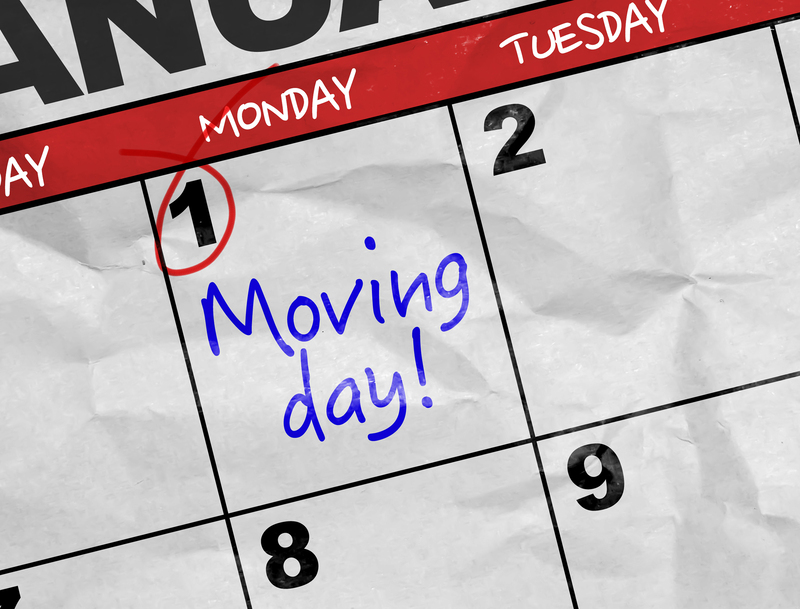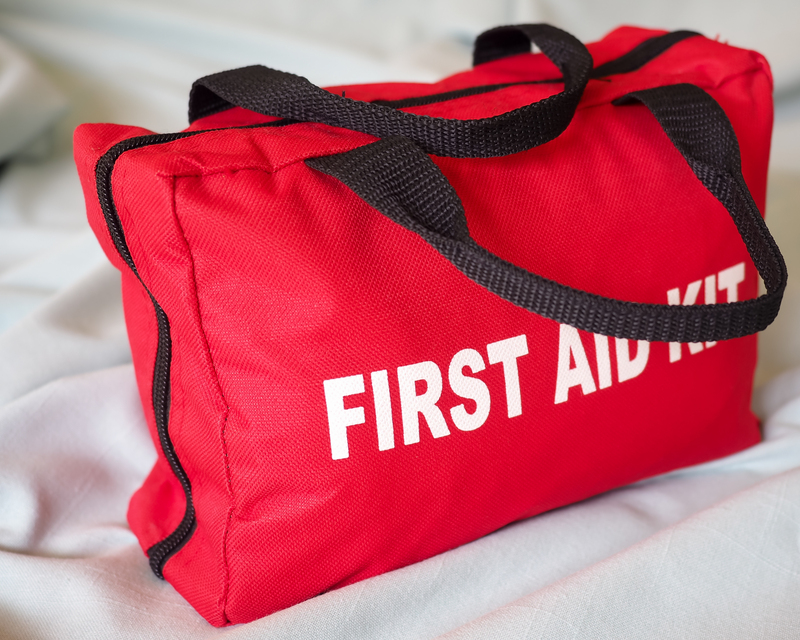Solo Lifting: How to Handle Heavy Objects Alone
Posted on 12/06/2025
Solo Lifting: How to Handle Heavy Objects Alone
If you ever needed to move a hefty piece of furniture, shift a large appliance, or simply rearrange your living space without assistance, you know that solo lifting can be both physically daunting and potentially dangerous. Whether you're a DIY enthusiast, a homeowner, or someone working in a warehouse, understanding proper methods for lifting heavy objects alone is essential for safety and efficiency. This comprehensive guide provides practical techniques, safety tips, and tools to help you manage heavy lifting tasks solo, minimizing the risk of injury.

Is Solo Lifting Safe?
Lifting heavy items without help is sometimes unavoidable, but it carries risk. Most lifting-related injuries are due to poor posture, incorrect techniques, or an underestimation of the object's weight. However, with preparation, awareness, and smart strategies, solo lifting can be done *safely* and *efficiently*.
- Back injuries are the most common hazard associated with improper lifting.
- Strained muscles and joint damage can also occur if proper form is neglected.
- Poorly lifted objects may drop, causing property damage or personal harm.
That's why it's crucial to learn the best practices for handling heavy objects alone the right way.
Preparation Before You Lift Alone
Assess the Task
Before you even bend your knees, take a few moments to analyze the item and your path:
- How much does it weigh? Check the object's label or estimate its weight. If it's *too heavy,* seek help or use additional equipment.
- What is its shape and size? Awkward shapes are tougher to balance.
- Clear the path. Remove obstacles, rugs, and cords that could trip you.
- Plan your resting points if moving a long distance.
Wear Proper Attire and Gear
- Gloves improve grip and protect hands.
- Closed-toe shoes support your feet against accidental drops.
- Wear clothes that don't restrict movement but are tight enough to avoid catching.
- Consider a back support belt for added protection.
Techniques for Solo Lifting: Lifting Heavy Objects Alone Safely
Using the correct technique is crucial to preventing injury when lifting hefty objects by yourself. Use these steps:
1. The Power Stance
- Stand with your feet shoulder-width apart.
- Knees slightly bent; keep your back straight.
- Position yourself as close to the object as possible.
Keeping the weight centered reduces strain on your spine and muscles.
2. Squat, Don't Bend
Never bend at the waist. Instead, squat down by bending your knees and hips. Keep your back straight and upright. This method allows your legs, which are much stronger than your back, to take most of the force.
3. Secure a Firm Grip
- Grasp the object using both hands wherever possible.
- If the item is slippery, use grip gloves or wrap it in a grippable cloth.
This reduces the risk of dropping or shifting the object mid-lift.
4. Lift Smoothly
- Lift in a smooth, controlled motion--avoid jerking or twisting.
- Keep the item close to your body as you stand up.
The closer the load is to your body, the less stress on your back.
5. Walk, Don't Rush
- Take small, steady steps. Don't rush or run.
- Pivot using your feet, not your waist or back.
6. Lowering the Object
When setting the object down, use the squatting technique in reverse. Never bend at the waist to place it down--always squat with your knees.
Additional Solo Lifting Tips and Safety Precautions
- Don't Be a Hero: If an item is too heavy, oversized, or awkward--get help or use aids.
- Rest Frequently: Overtired muscles are more likely to fail.
- Lift Only What You Can Handle: Your maximum limit depends on your physical fitness--don't exceed it.
- Stay Hydrated: Hydration maintains muscle performance and prevents cramps.
- Never Lift With a Twisted Spine: Alignment is crucial; twisting increases the risk of injury severely.
Equipment and Tools for Solo Lifting Heavy Items
Specialized equipment can make lifting heavy objects alone much easier and safer. Here's what you might use:
Furniture Sliders
- Place under heavy items to slide across floors with minimal effort.
- Protect floors from scratches.
Lifting Straps or Moving Harnesses
- Transfer much of the weight to your shoulders and core.
- Adjustable to fit most items and individuals.
Hand Trucks and Dollies
- Perfect for moving heavy appliances alone or stacked boxes.
- Let the wheels do the work, reducing physical strain.
Lever Bars and Pry Bars
- Used to nudge very heavy objects up or over short obstacles.
Investing in quality moving equipment is invaluable for anyone who frequently faces solo lifting tasks.
How to Move Large or Awkward Items Alone
Some objects, like couches or tall cabinets, defy simple lifting due to awkward shape or center of gravity. Use these strategies:
- Remove detachable parts: Take off drawers, shelves, or doors to lighten load.
- Angle and pivot: Sometimes "walking" a bulky object by rocking it side-to-side is easier than lifting outright.
- Use sliders and dollies wherever possible, especially on smooth surfaces.
- If using stairs, slide the object up or down one step at a time, keeping your body above the item to prevent it from falling on you.
Moving Heavy Objects Upstairs or Downstairs Alone
- Use a stair-climbing dolly for extra safety or create a makeshift ramp with sturdy boards.
- Never lift above your shoulders--danger of dropping increases dramatically.
- Always keep your balance; take it step by step.
Common Solo Lifting Mistakes (And How to Avoid Them)
Even with the right knowledge, common errors can lead to injury or failure when moving heavy things alone. Watch out for these:
- Overestimating strength: Trying to lift more than you can safely handle is a leading cause of injury.
- Poor grip: If you can't hold it securely, wait until you have gloves, straps, or grip assistance.
- Insufficient warm-up: *Cold muscles* are more prone to strains--do some light stretches before beginning.
- Not clearing the way: Always ensure your path is free from tripping hazards.
- Ignoring body alignment: Twisting, bending, or jerking at odd angles can damage muscles or joints.
Solo Lifting for Specific Scenarios
Moving Heavy Furniture Alone
- Disassemble if possible: remove legs, cushions, arms.
- Place furniture on sliders to move across floors easily.
- Balance the piece vertically if you must navigate turns or tight hallways.
Lifting and Moving Large Appliances Solo
- Empty all contents before moving a fridge or washing machine.
- Use appliance dollies with straps to stabilize the load.
Transporting Boxes and Smaller Items
- Stack boxes securely on a dolly for fewer trips.
- Use proper lifting form even for multiple light items to prevent fatigue injury.
Long-Term Health: Caring for Your Body as a Solo Lifter
Even perfect technique cannot completely eliminate risk. To sustain your body for future solo lifting tasks:
- Stretch before and after lifting--focus on the back, hamstrings, and shoulders.
- Strengthen core and leg muscles through regular exercise.
- Avoid repetitive heavy lifting if possible--alternate tasks to prevent overuse injuries.
- Listen to your body: Persistent pain means you should seek medical attention and reassess your lifting techniques.

When to Call for Assistance
If you encounter any of these scenarios, do not attempt to lift heavy objects alone:
- The item's weight is uncertain but likely over 45kg (100lbs).
- The object is too large to get a secure grip.
- There's a risk of damage, destruction, or injury if the object is dropped.
- You already feel unsteady or in pain before starting.
Conclusion: Mastering Solo Lifting for Safety and Efficiency
Solo lifting is an essential life skill for modern independent living and working. Approached with preparation, the right technique, and suitable equipment, you can successfully and safely handle a variety of heavy lifting tasks alone without risking your health. Remember to always prioritize safety over speed, and never hesitate to ask for help or use lifting aids when needed. By mastering these skills and adopting a thoughtful, methodical approach, you'll ensure your solo moves are both safe and effective.
For more information and resources on safe lifting and moving, consult official safety guidelines from OSHA, your state's occupational health authority, or professional moving associations.





